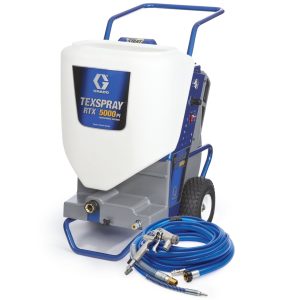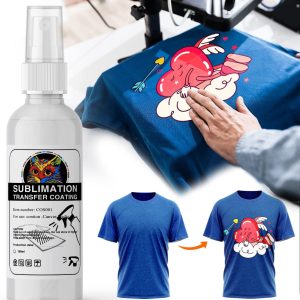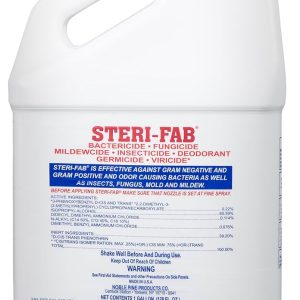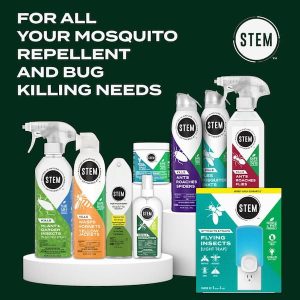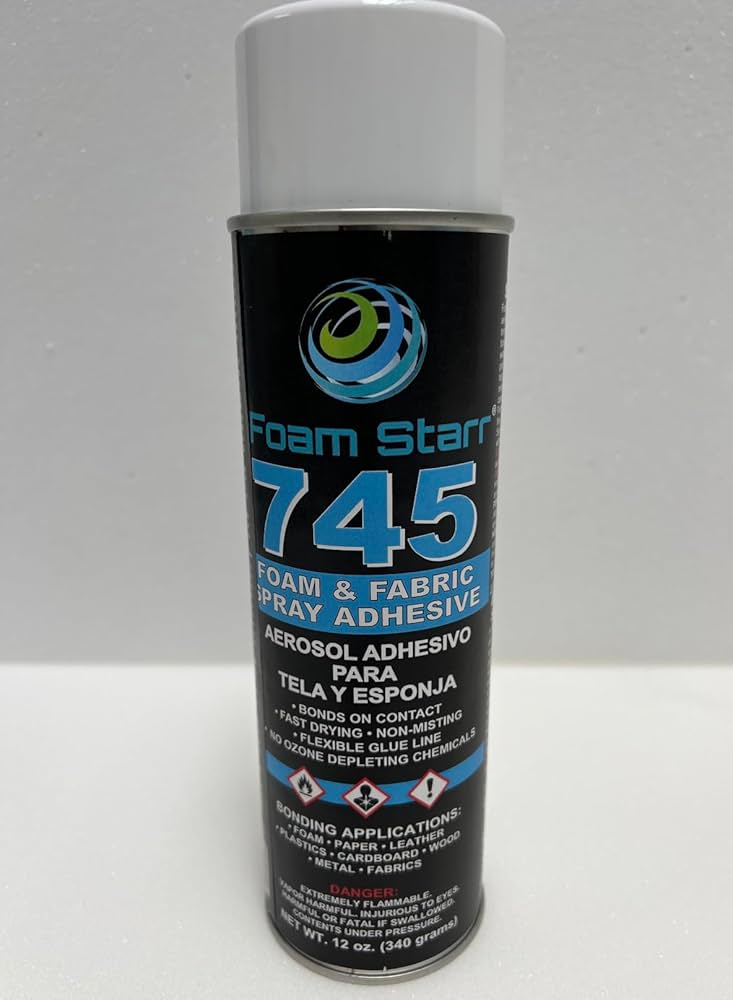
When working with foam materials, choosing the right spray glue for foam can make or break your project. Whether you’re tackling upholstery work, crafting projects, or professional construction applications, understanding the different types of foam adhesives and their specific applications is crucial for achieving strong, lasting bonds. This comprehensive guide explores everything you need to know about selecting, using, and maximizing the effectiveness of spray foam adhesives.
The foam adhesive market has evolved significantly over recent years, with manufacturers developing specialized formulations that won’t dissolve or damage delicate foam materials. Unlike traditional adhesives that can eat through polystyrene and other foam types, modern spray glue for foam products are engineered to create strong bonds while preserving the integrity of the foam substrate.
Understanding Different Types of Spray Glue for Foam Applications
Foam-safe spray adhesives come in several distinct formulations, each designed for specific applications and foam types. Understanding these differences is essential for selecting the right product for your particular project requirements.
Contact cement spray adhesives represent one of the most popular categories of foam adhesives. These products create an immediate, permanent bond upon contact and are particularly effective for upholstery applications where fabrics need to be attached to foam cushions. Contact cement spray adhesives typically offer extended working time, allowing for repositioning before the final bond sets. The advantage of contact cement formulations lies in their ability to create strong, flexible bonds that can withstand repeated stress and movement.
Temporary tack spray adhesives provide a different approach, offering repositionable bonds that allow for adjustments during installation. These products are particularly useful in craft applications where precise positioning is critical. Temporary tack adhesives maintain their adhesive properties longer than permanent formulations, giving users the flexibility to make multiple adjustments before achieving the final placement. Once the desired position is achieved, pressure application activates the permanent bonding mechanism.
High-temperature resistant spray adhesives are specifically formulated for applications where the bonded materials will be exposed to elevated temperatures. These specialized formulations maintain their bond strength and flexibility even when exposed to heat sources, making them ideal for automotive applications, industrial settings, and other environments where temperature fluctuations are common. The chemical composition of high-temperature resistant adhesives typically includes modified polymers that retain their molecular structure under thermal stress.
Professional-Grade Spray Glue for Foam Brands and Product Analysis
3M spray adhesive products dominate the professional foam bonding market with several specialized formulations. 3M™ Insulation & Polystyrene 78 Spray Adhesive avoids dissolving and degrading polystyrene foam, making it an excellent choice for tasks such as foundation insulation, polystyrene block assembly, and attaching foam to wood and other substrates. This particular product offers up to 15 minutes of working time and features a lace spray pattern for optimal coverage control.
The Foam & Fabric 24 spray adhesive offers a variable width lace spray pattern that allows for precise placement, making it particularly suitable for upholstery applications. The 3M 24 formulation is specifically designed for bonding foam and fabric materials, providing the flexibility and durability required in furniture manufacturing and automotive upholstery applications.
Gorilla Spray Adhesive represents another professional-grade option in the foam adhesive market. Gorilla Spray Adhesive is heavy duty and moisture resistant. This spray adhesive forms a clear, permanent bond that can be used for indoor/outdoor projects. The moisture resistance feature makes Gorilla products particularly suitable for outdoor applications where exposure to humidity and weather conditions is a concern.
Loctite foam adhesive products offer specialized formulations for different application requirements. These products are engineered with advanced polymer chemistry that provides excellent adhesion to foam surfaces while maintaining flexibility in the cured bond. Loctite formulations often include additives that improve the adhesive’s resistance to environmental factors such as UV exposure and temperature cycling.
Foam Material Compatibility and Adhesive Selection
Polystyrene foam compatibility requires careful adhesive selection, as many common solvents and adhesives can dissolve or damage this material. Polystyrene, including both expanded (EPS) and extruded (XPS) varieties, is particularly sensitive to hydrocarbon-based solvents. When selecting spray glue for foam polystyrene applications, look for products specifically labeled as polystyrene-safe or foam-safe.
Polyurethane foam bonding presents different challenges and opportunities compared to polystyrene applications. Polyurethane foam’s more resistant chemical structure allows for a broader range of adhesive compatibility. However, the flexible nature of polyurethane foam requires adhesives that can maintain their bond strength under repeated compression and expansion cycles. Flexible cyanoacrylate formulations and specialized polyurethane-compatible spray adhesives typically provide the best results for these applications.
Memory foam adhesive requirements demand special consideration due to the material’s unique properties. Memory foam’s temperature-sensitive characteristics and slow recovery rate require adhesives that won’t interfere with these properties. Water-based spray adhesives often provide the best compatibility with memory foam, as they don’t contain solvents that could alter the foam’s cellular structure or responsiveness.
EVA foam bonding (ethylene-vinyl acetate) requires adhesives that can bond effectively to the material’s somewhat waxy surface. EVA foam is commonly used in cosplay, crafting, and protective padding applications. The closed-cell structure of EVA foam can make adhesion challenging, requiring spray adhesives with excellent wetting properties and strong initial tack.
Application Techniques for Maximum Bond Strength
Surface preparation protocols are critical for achieving optimal bond strength with spray glue for foam. All surfaces must be clean, dry, and free from contaminants such as dust, oils, or release agents. For foam materials that have been stored for extended periods, surface wiping with a clean, lint-free cloth can remove accumulated dust and improve adhesive wetting.
Temperature and humidity control during application significantly impacts bond performance. Most spray adhesives perform optimally when applied at room temperature (68-72°F) with relative humidity below 60%. High humidity can interfere with the adhesive’s curing process, while extreme temperatures can affect spray pattern consistency and working time.
Application pattern techniques vary depending on the specific adhesive formulation and project requirements. Parallel spray patterns work well for large, flat surfaces, while cross-hatch patterns provide better coverage for irregular surfaces. The distance between the spray nozzle and the substrate should typically be maintained at 6-8 inches for optimal coverage and minimal overspray.
Working time management is crucial for successful foam bonding applications. Most spray adhesives provide a specific working time window during which positioning adjustments can be made. Understanding and working within this timeframe prevents premature setting and ensures proper bond formation. For large projects, working in sections that can be completed within the adhesive’s working time prevents bonding failures due to timing issues.
Safety Protocols and Health Considerations
Ventilation requirements for spray foam adhesives cannot be overstated. Make sure workers wear personal protective equipment while cutting and scraping foam to avoid exposure to dust and particles that may contain isocyanates. Adequate ventilation helps prevent the accumulation of adhesive vapors and ensures safe working conditions.
Personal protective equipment (PPE) recommendations for foam adhesive applications include respiratory protection, eye protection, and skin protection. Nitrile gloves provide good chemical resistance against most spray adhesive formulations, while safety glasses or face shields protect against overspray. When working in enclosed spaces or with large quantities of adhesive, respirators with organic vapor cartridges provide additional protection.
Storage and handling protocols ensure both safety and product performance. Spray adhesives should be stored in cool, dry locations away from heat sources and ignition sources. Refrain from smoking while spraying the foam and turn off all pilot lights and other sources of ignition. Temperature extremes can affect the adhesive’s spray characteristics and bonding performance, making proper storage conditions essential for consistent results.
Emergency procedures should be established before beginning any foam bonding project. This includes having appropriate cleaning solvents available for removing uncured adhesive from skin or surfaces, understanding first aid procedures for adhesive contact with eyes or skin, and having fire suppression equipment readily accessible when working with flammable adhesive formulations.
Common Applications and Industry Uses
Upholstery and furniture manufacturing represents one of the largest application areas for spray glue for foam. In this industry, foam cushions must be bonded to fabric covers and frames with adhesives that provide long-term durability while maintaining flexibility. The repeated stress cycles experienced by furniture require adhesives with excellent fatigue resistance and the ability to maintain bond strength over extended periods.
Professional upholsterers often prefer spray adhesives that offer extended working time, allowing for careful positioning and adjustment of fabric over complex foam shapes. The adhesive must penetrate both the fabric backing and the foam surface to create a mechanical interlock that complements the chemical bond. Temperature resistance is also important in upholstery applications, as furniture may be exposed to direct sunlight or heat sources that could soften inferior adhesives.
Automotive interior applications demand adhesives with exceptional performance characteristics. Vehicle interiors experience extreme temperature variations, from sub-freezing winter conditions to summer heat that can exceed 150°F inside a closed vehicle. Spray glue for foam used in automotive applications must maintain bond integrity across this entire temperature range while also resisting the effects of UV exposure and humidity variations.
Automotive foam bonding applications include headliner attachment, seat cushion assembly, door panel installation, and sound dampening material attachment. Each of these applications has specific performance requirements that influence adhesive selection. For example, headliner adhesives must resist sagging under gravity and temperature stress, while seat adhesives must withstand repeated compression and expansion cycles.
Insulation installation projects utilize specialized foam adhesives designed for building construction applications. 3M™ Insulation & Polystyrene 78 Spray Adhesive is a high-strength, industrial-grade spray adhesive designed with a lace spray pattern for optimal coverage. With up to 15 minutes of working time, it is effective for bonding most types of insulation, such as fiberglass and expanded polystyrene foam (EPS), onto numerous kinds of materials, including plastics, metals, wood, paper, and more.
Building insulation applications require adhesives that can bond foam insulation panels to various substrate materials including concrete, steel, wood, and masonry surfaces. The adhesive must provide immediate bonding strength to prevent insulation movement during installation while developing full cure strength over time. Environmental resistance is crucial, as building envelope applications may be exposed to moisture, temperature cycling, and other weather-related stresses.
Craft and hobby applications represent a growing market segment for foam adhesives. Cosplay enthusiasts, model builders, and DIY crafters require adhesives that are easy to use, provide precise control, and bond effectively to various foam types. EVA foam, commonly used in cosplay armor and prop construction, requires adhesives that can create strong, flexible bonds without interfering with the foam’s ability to be heated and shaped.
Craft applications often involve bonding foam to dissimilar materials such as plastics, metals, fabrics, and papers. The adhesive must provide good adhesion to these varied substrates while remaining workable enough for detailed assembly work. Clean-up characteristics are also important in craft applications, as precision work often requires the removal of excess adhesive from visible areas.
Troubleshooting Common Bonding Issues
Bond failure analysis helps identify the root causes of adhesive performance problems. Poor surface preparation represents the most common cause of bond failures in foam applications. Contamination from mold release agents, dust, oils, or other substances can prevent proper adhesive wetting and lead to weak bonds that fail under stress. Proper cleaning protocols and surface preparation techniques eliminate most contamination-related bond failures.
Environmental conditions during application and cure significantly impact bond development. High humidity can interfere with solvent evaporation and cure chemistry, leading to weak or tacky bonds. Low temperatures can affect adhesive flow characteristics and extend cure times, while excessive heat can cause premature setting before proper positioning is achieved. Monitoring and controlling environmental conditions during application prevents many common bonding problems.
Adhesive compatibility issues can arise when different foam materials or surface treatments interact negatively with the selected adhesive formulation. Some foam materials contain additives or surface treatments that inhibit adhesive bonding. Compatibility testing on sample pieces before beginning full-scale projects can identify potential issues and allow for adhesive selection optimization.
Application technique problems often manifest as inconsistent bond strength across the bonded area. Inadequate adhesive coverage, improper spray distance, or inconsistent application pressure can create weak spots that lead to premature bond failure. Training in proper application techniques and regular equipment maintenance ensure consistent results across all projects.
Cost Analysis and Value Considerations
Price comparison methodologies for foam adhesives should consider more than just the initial purchase price per unit. Coverage rates, working characteristics, and performance reliability all impact the total cost of ownership for adhesive products. Higher-priced professional-grade adhesives often provide better coverage rates and more reliable performance, resulting in lower total project costs despite higher initial investment.
Performance value calculations should include factors such as bond durability, rework requirements, and long-term performance. Adhesive failures that require repair or replacement work can quickly exceed the cost savings achieved through cheaper product selection. Professional-grade spray glue for foam products typically justify their higher cost through improved reliability and performance characteristics.
Bulk purchasing considerations can provide significant cost savings for high-volume users. Many professional adhesive suppliers offer volume discounts, extended payment terms, and technical support services that add value beyond simple price reductions. Establishing relationships with reliable suppliers ensures consistent product availability and access to technical expertise when challenging applications arise.
Equipment costs should be factored into the total cost analysis for foam bonding operations. Professional spray equipment, ventilation systems, and safety equipment represent significant investments that must be amortized across the volume of work performed. However, these investments typically provide improved application consistency, better working conditions, and enhanced safety that justify their cost through improved productivity and reduced liability.
Environmental Impact and Sustainability
VOC emissions from spray adhesives represent a significant environmental consideration. Volatile Organic Compounds contribute to air quality problems and are subject to increasing regulatory restrictions. Low-VOC and water-based adhesive formulations provide alternatives that reduce environmental impact while maintaining acceptable performance characteristics. It has a low VOC, so it is safer to use and has a fast tack for quick bonding, demonstrating how manufacturers are responding to environmental concerns.
Waste reduction strategies for foam bonding operations include proper adhesive storage to prevent spoilage, accurate coverage calculations to minimize excess usage, and recycling programs for empty containers. Many adhesive manufacturers now offer container return programs that ensure proper disposal or recycling of packaging materials.
Sustainable product alternatives are becoming increasingly available as manufacturers respond to environmental concerns and regulatory requirements. Water-based adhesive formulations, bio-based raw materials, and recyclable packaging options provide paths toward more sustainable foam bonding practices. While these alternatives may require adjustments to application techniques or performance expectations, they offer benefits in terms of worker safety and environmental impact.
Regulatory compliance requirements for adhesive emissions and disposal continue to evolve. Staying informed about local, state, and federal regulations ensures compliance and helps identify opportunities for improving environmental performance. Many jurisdictions offer incentives for businesses that exceed minimum environmental standards, providing economic benefits for sustainable practices.
Quality Control and Testing Procedures
Bond strength testing methodologies provide objective measures of adhesive performance in foam applications. Standard test methods such as ASTM D1876 (T-peel test) and ASTM D3330 (peel adhesion test) offer reproducible procedures for evaluating bond strength under controlled conditions. Regular testing of production samples ensures consistent quality and identifies potential problems before they impact final products.
Environmental testing protocols evaluate adhesive performance under various environmental conditions that may be encountered in service. Temperature cycling tests, humidity exposure tests, and UV aging tests provide information about long-term performance expectations. This testing is particularly important for applications where bonded assemblies will be exposed to challenging environmental conditions.
Documentation requirements for quality control programs include batch records, test results, and application parameters for each project or production run. This documentation provides traceability in case of performance issues and supports continuous improvement efforts. Many customers now require detailed documentation of adhesive performance and application parameters as part of their quality assurance programs.
Certification standards such as ISO 9001 and industry-specific standards provide frameworks for quality control programs. Compliance with these standards demonstrates commitment to quality and can provide competitive advantages in the marketplace. Many professional adhesive suppliers maintain certifications that ensure consistent product quality and performance.
Advanced Application Techniques
Multi-layer bonding strategies involve applying spray glue for foam in multiple thin coats rather than a single thick application. This technique often provides better penetration into porous foam surfaces and more uniform coverage across complex geometries. The first coat serves as a primer that partially seals the foam surface, while subsequent coats provide the primary bonding strength.
Heated application methods can improve the performance of certain adhesive formulations by reducing viscosity and improving flow characteristics. Heated adhesives often provide better wetting of difficult-to-bond surfaces and faster initial tack development. However, heated application requires specialized equipment and additional safety precautions to prevent overheating and degradation of the adhesive.
Pressure activation techniques involve applying mechanical pressure to bonded assemblies during the initial cure period. This pressure improves contact between the adhesive and substrate surfaces and can significantly increase ultimate bond strength. Vacuum bagging, weighted fixtures, and pneumatic clamping systems provide controlled pressure application for critical bonding operations.
Surface modification methods can improve the bondability of difficult foam materials. Corona treatment, flame treatment, and chemical etching techniques modify the surface energy and topography of foam materials to enhance adhesive wetting and mechanical interlocking. These techniques are particularly useful for low-energy surfaces such as polyethylene and polypropylene foams.
Equipment Selection and Maintenance
Spray equipment selection significantly impacts the quality and efficiency of foam bonding operations. Professional spray guns provide better control over spray pattern, adhesive flow rate, and application pressure compared to aerosol containers. The investment in professional equipment typically pays for itself through improved material utilization, better application consistency, and reduced labor costs.
Maintenance protocols for spray equipment ensure consistent performance and extend equipment life. Daily cleaning procedures prevent adhesive buildup that can clog spray nozzles and affect spray patterns. Regular replacement of worn components such as nozzles, seals, and filters maintains optimal equipment performance and prevents application problems.
Calibration procedures ensure that spray equipment delivers consistent adhesive flow rates and spray patterns. Regular calibration checks using flow measurement and pattern analysis techniques identify equipment problems before they affect product quality. Documentation of calibration results provides traceability and supports quality control programs.
Troubleshooting guides for equipment problems help maintain productivity when issues arise. Common problems include clogged nozzles, inconsistent spray patterns, and adhesive flow irregularities. Understanding the symptoms and causes of these problems enables quick resolution and minimizes downtime during production operations.
Training and Skill Development
Operator training programs ensure that personnel have the knowledge and skills necessary for successful foam bonding operations. Training should cover adhesive selection, surface preparation, application techniques, safety procedures, and troubleshooting methods. Documented training records demonstrate competency and support quality control programs.
Certification requirements for adhesive applications are becoming more common in industries where bonding failures can have serious consequences. Professional certification programs provide standardized training and testing that ensures consistent skill levels across different operators and facilities. Many customers now require certified operators for critical bonding applications.
Continuing education opportunities help operators stay current with new adhesive technologies, application techniques, and safety requirements. Industry associations, adhesive manufacturers, and technical institutions offer training programs, workshops, and seminars that provide ongoing skill development opportunities.
Performance monitoring systems track operator performance and identify opportunities for improvement. Metrics such as application consistency, rework rates, and safety incidents provide objective measures of operator effectiveness. Regular performance reviews and feedback sessions support continuous improvement in bonding operations.
Frequently Asked Questions About Spray Glue for Foam
What is the best spray glue for foam crafting projects? For crafting applications, 3M Foam & Fabric 24 spray adhesive and Loctite High Performance 200 are excellent choices. These products provide good control, reasonable working time, and strong bonds suitable for most craft foam materials.
How long does spray glue for foam take to cure completely? Most spray foam adhesives achieve initial bond strength within 15-30 minutes, but full cure typically takes 24-48 hours depending on environmental conditions and adhesive thickness.
Can spray glue for foam be used on polystyrene without damaging it? Yes, but you must use polystyrene-safe formulations like 3M Polystyrene Foam Insulation Spray Adhesive 78. Regular spray adhesives containing solvents will dissolve polystyrene foam.
Is spray glue for foam waterproof once cured? Many professional-grade spray foam adhesives offer water resistance, but true waterproof performance depends on the specific formulation. Check the manufacturer’s specifications for moisture resistance ratings.
What safety equipment is needed when using spray glue for foam? Essential safety equipment includes nitrile gloves, safety glasses, and adequate ventilation. For large projects or enclosed spaces, use respiratory protection with organic vapor cartridges.
How should unused spray glue for foam be stored? Store spray adhesives in cool, dry locations away from heat sources and ignition sources. Keep containers upright and ensure caps are tightly sealed to prevent solvent evaporation.
Ready to start your foam bonding project? Browse our selection of professional-grade spray glue for foam products and find the perfect adhesive for your specific application needs. For additional cleaning supplies, check out our spray hand sanitizer refill options to keep your workspace clean and safe.
Sources:
- Taylor Theatrics – Adhesives That Won’t Dissolve Your Foam
- 3M United States – Polystyrene Foam Insulation Spray Adhesive 78
- Sprayfoam Solutions Toronto – The Ultimate Guide to Foam Spray Adhesive
- EPA – Safer Workplace Practices for Spray Polyurethane Foam Installation
